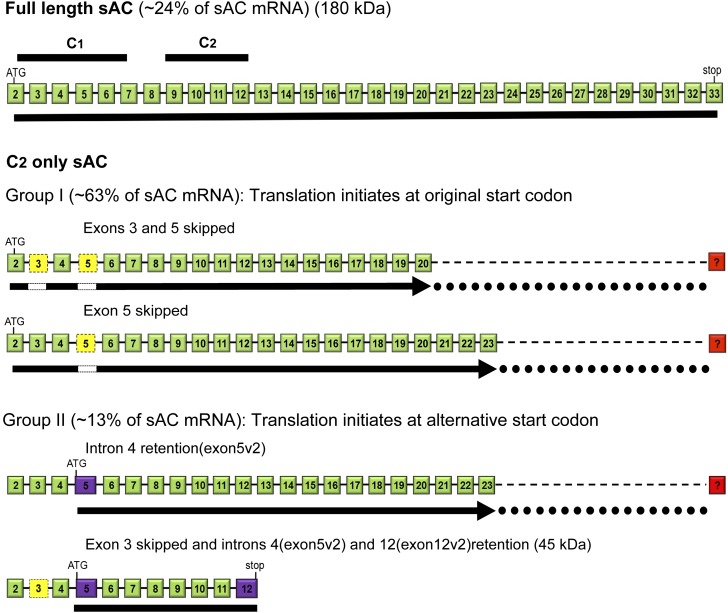Figure 1.
Groups of alternatively spliced soluble adenylyl cyclase (sAC) transcripts identified in normal human bronchial epithelial (NHBE) cells. The exon compositions of alternatively spliced sAC messenger RNAs (mRNAs) are diagrammed showing the included exons (green boxes), excluded exons (yellow boxes), and newly identified exons (containing previously thought intron sequences; purple boxes). Top: Full-length sAC (sACfl) mRNA containing coding exons from 2 to 33 is shown with the locations of the two catalytic domains (C1 and C2; black bars above their coding exons 2–7 and 9–12, respectively). Full-length or C1- and C2-containing splice variants represent roughly 24% of the found forms. The black line below the mRNA indicates the open reading frame. Alternatively spliced mRNAs were identified by RT-PCR with primers from exon 2 to exons 20 or 23. Group 1 contains mRNAs with an open reading frame that initiates at the same ATG as the full-length form, but skips exons within the C1 coding region, and thus do not contain a complete C1, but maintain the correct reading through C2, as indicated by the black arrow below, and initiate at the original start codon. Group 1 variants made up roughly 63% of the found forms. The dotted black line indicates the putative remainder of the mRNA. Group 2 contains transcripts that retain a portion of previously annotated intron 4 (now exon 5v2), introducing a stop codon and new translation initiation codon that is in frame with the sAC coding sequence, and thus deletes roughly 50% of C1 and has a complete C2. Group 2 variants made up roughly 13% of the found forms. One of these mRNAs (bottom) also retains a portion of what was formerly annotated as intron 12 (new exon 12v2), introducing a new stop codon and encoding a roughly 45-kD protein.

